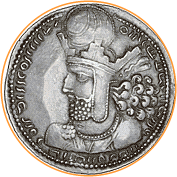“The
point is that you learn how to make your work by making your work, and a great
many of the pieces you make along the way will never stand out as finished
art.” Pg.6
“You
make good work by (among other things) making lots of work that isn’t very
good, and gradually weeding out the parts that aren’t good, the parts that
aren’t yours.” p. 26 What
work have you made that seems most yours? Why?
Recently I have been making sculptures that hang in space. I feel these pieces are most mine (at the moment) because I have been turning this idea over and over in my head for a few years now and feel I have resolved it.
“Chances
are that whatever theme and technique attract you, someone has already
experimented in the same direction. This is unavoidable: making any art piece inevitably
engages the larger themes and basic techniques that artists have used for
centuries. Finding your own work is a process of distilling from each those
traces that ring true to your own spirit.” p. 103 Who are
artists that are making work that relates to you? Are there other influences? How are these
other influences connected to your work?
Jennifer Pettus is an artist living in Colorado that I met while attending graduate school at CU Boulder. I can remember the first time I saw her work and how the work inspired me to make objects and drawings that had visual power while remaining elusive. Eva Hesse and Georgia O'Keefe are two artists whom I admired since a young age. I believe their influences are felt in my work through my use of materials as well as the sensual content.
“And
while a hundred civilizations have prospered (sometimes for centuries) without
computers or windmills or even the wheel, none have survived even a few generations
without art.” p. 104 Discuss, in your own words, why you think
this is so.
I think our survival depends on visual satisfaction. Visually we seek balance and this balance translates to beauty. We seek rhythm and balance with sound. We seek to please our taste buds with flavors and our sense of smell with pleasant and balanced aromas. Holding objects, as well as other human beings, completes our need to feel connected mentally and physically.
“Art is
something you do out in the world, or something you do about the world, or even
something you do for the world. The need to make art may not stem solely from the
need to express who you are, but from a need to complete a relationship with
something outside of yourself.”
p. 108 Which of
these ideas resonates most with you? Why? If they all resonate, how do they
differ?
The idea that resonates the most is to make art for others (the world). I am interested in historical origins and the discourse that results from discovery.
“Making
art depends upon noticing things-things about yourself, your methods, your
subject matter.” p. 109
What do
you notice about yourself? What are your methods? Subject matter? The answers do not have to be limited to art
related topics.
I always need to be making things - making art, making food for a party, making space in the garage, making plans for trip, making assignments for my students. For me, "making" encompasses research, planning, construction and presentation.
“The
only work really worth doing- the only work you can do convincingly- is the
work that focuses on the things you care about.” p. 116
“All
this suggests a useful working approach to making art: notice the objects you
notice.” Pg.101 What do
you care about? The answers do not have to be limited to art related topics.
I care about making visual experiences. I thrive off of creative problem solving. I care about family and friends as well as being a good teacher and a good citizen.




































